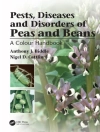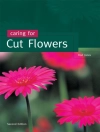This work reviews and explores various aspects of uchuva growth and development from seed germination, vegetative growth and phyllotaxy, floral development, pollination, and pollen morphology through fruit development, properties and health benefits. Other sections of the book cover uchuva genetic diversity, hybridization, chromosome number and morphological diversity. Uchuva is economically important in most South American counties, has been growing in popularity in Central America, and is marketed in North American and Europe as the golden berry. This is the first concise reference work that delves into the fascinating world of uchuva reproductive biology. It includes the latest scientific references, some of which have been contributed by the authors of the current book. The authors have observed the plant in the field and have produced a unique photographic record to help the reader see the actual morphological structures and developmental processes in action.
विषयसूची
Abstract.- 1. Preface.- 2. Introduction.- 3. Flower morphology.- 4. Phyllotaxy and floral development.- 5. Pollen morphology.- 5.1 Pollen viability and germination.- 6. Pollination.- 6.1 Floral visitors and insect pollination.- 7. Fruit morphology.- 8. Propagation.- 8.1 Seed germination.- 8.2 Vegetative propagation.- 8.2 Cuttings.- 9. Fruit development.- 10. Fruit properties and health benefits.- 11. Breeding and hybridization.- 12. Genetic diversity.- 12.1 Chromosome number.- 13. Morphological diversity.- 14. Conclusion.
लेखक के बारे में
Fernando Ramírez is a biologist with over 20 years of research experience in the field of tropical plant biology. His research initially focused on mango flowering in the tropics. His research interests include tropical plant reproductive biology, particularly among solanum species such as uchuva (Physalis peruviana L.), tree tomato (Solanum betaceum Cav.), lulo (Solanum quitoense Lam.), and cocona (Solanum sessiliflorum Dunal). He currently works as an independent researcher.
Thomas Lee Davenport has spent his 45-year career at the Tropical Research and Education Center, IFAS, University of Florida conducting research on various aspects of tropical fruit reproductive physiology. His research efforts have included investigations in the mechanisms of floral induction and shoot initiation in both citrus and mango. This work has resulted in development of grower strategies to manage flowering and the timing of harvest of both crops. He also demonstrated that avocados are primarily self pollinated and wind pollinated in mixed cultivar plantings. Except in rare circumstances, avocado growers are, thus, not required to interplant cultivars to maximize production. He continues to advise tropical fruit growers worldwide on management strategies to enhance productivity of these and lesser-known tropical fruit species.












